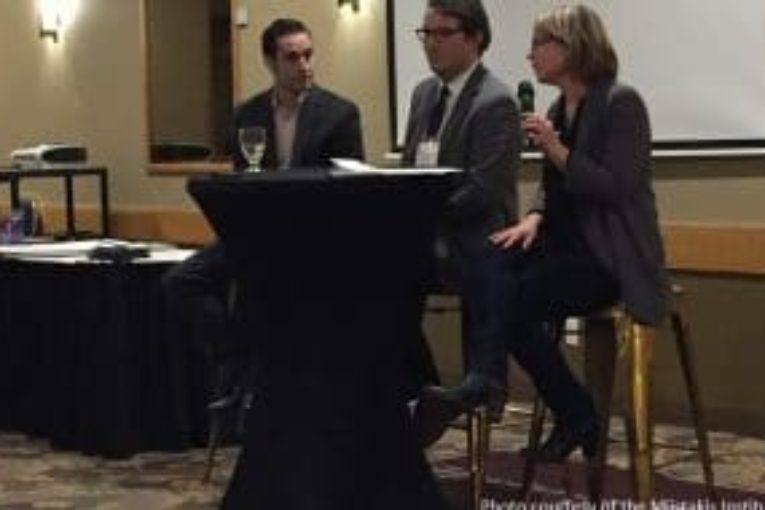
Municipal leaders, constituents interested in wind farms, lease payments, decommissioning, tax revenues and regulations
In January I participated on a panel for the Rural Municipalities and Renewable Energy Development – Education Session, which was a full-day educational opportunity organized by the Miistakis Institute where municipal decision makers could learn about the renewable energy approvals process for large-scale wind and solar energy project proposals. The event was hosted by Wheatland County and part of an initiative spearheaded by a partnership between the Alberta Association of Municipal Districts and Counties (AAMDC) and the Miistakis Institute to provide tools for municipalities to make informed decisions about the emerging renewable energy sector.
With the recently announced renewable energy procurements in both Alberta and Saskatchewan, there has been considerable interest from municipal leaders and their constituents about the wind energy industry, including questions about landowner lease payments, wind farm decommissioning, property tax arrangements and regulations. This is not a surprise when you consider that Alberta’s renewable energy plans are poised to annually top up municipal property tax coffers to the tune of $25.5 million and to return $13.5 million in land lease payments, according to an economic benefits report by the Delphi Group.
Engagement sessions with landowners, community leaders and other stakeholders are important in keeping communications channels open so that projects can move ahead with the trust and support of local communities. The Canadian Wind Energy Association (CanWEA) and our members make it a priority to have representatives from the industry attend these engagement events.
Doing so is among the many practices recommended in CanWEA’s Best Practices for Indigenous and Public Engagement which was developed to help industry members engage effectively with communities with a stake in wind energy development. For municipal leaders and landowners, having a peek at this handy guide provides valuable information about what to expect from industry. The guidelines were developed with input from practitioners in communications, Indigenous engagement, and public consultation, as well as through discussions with municipal leaders.
Another resource that is worth checking out is Renewable Energy in Alberta, which is a handbook for landowners by the Farmers Advocate Office (FAO) on the ‘ins and outs’ of wind energy development, including advice on what questions to ask when negotiating with renewable energy developers. Last year the FAO worked with stakeholders to refresh the document, which serves as a good primer for community members and answers questions such as:
I hope you will take advantage of these insightful resources and I also invite you to visit Planning a Wind Farm for more information for municipal leaders and landowners considering hosting projects.
Note: this blog was updated on September 11, 2018
Prairies Regional Director at the Canadian Wind Energy Association
You can read more of the news on source



